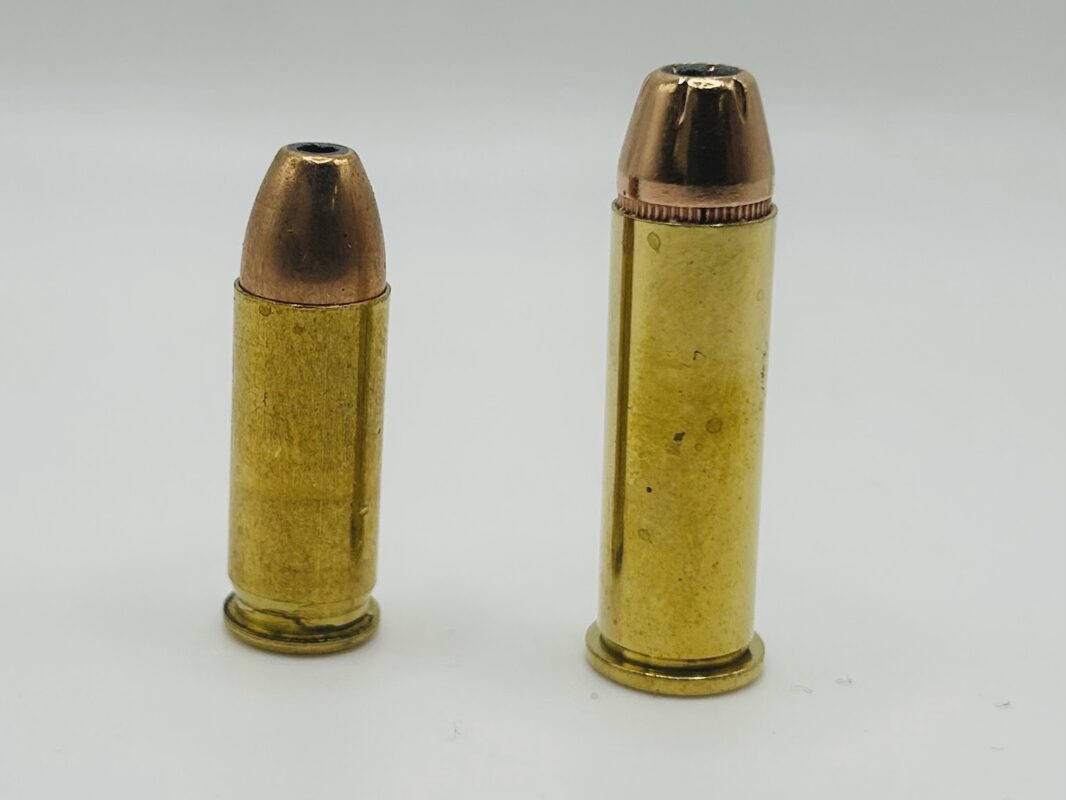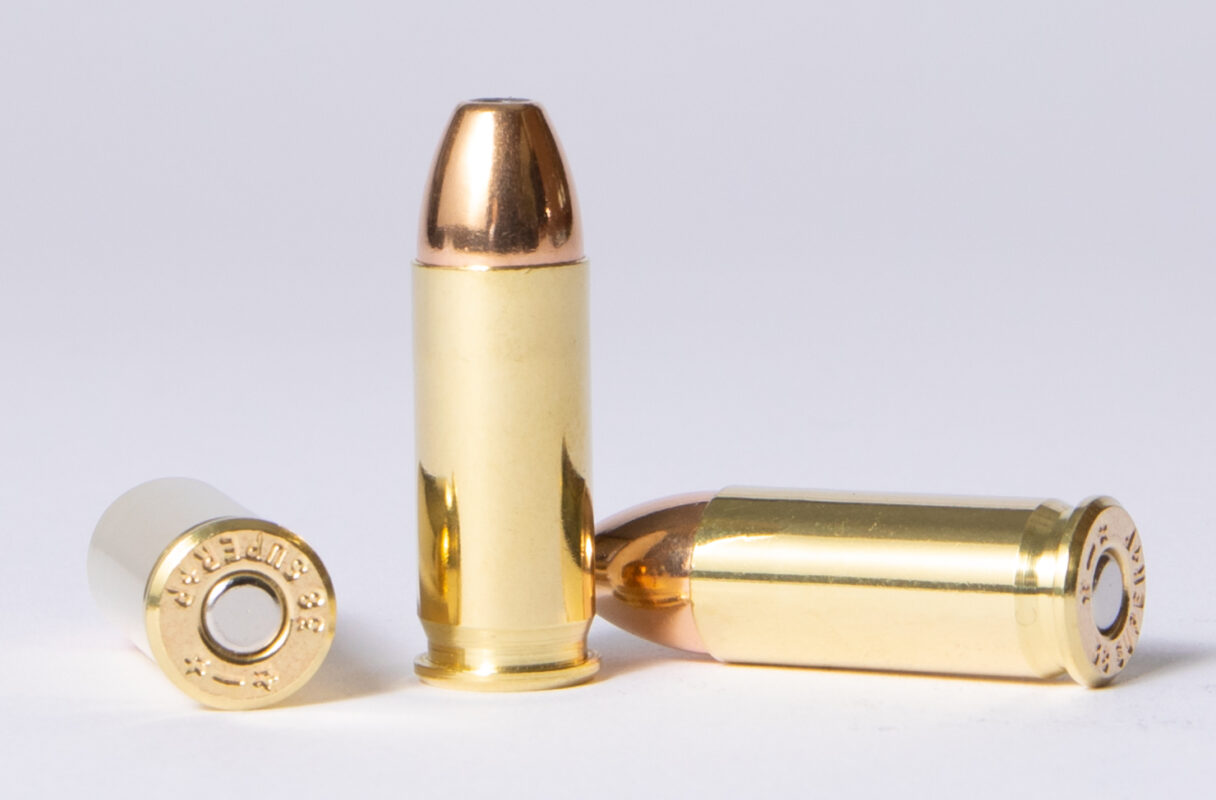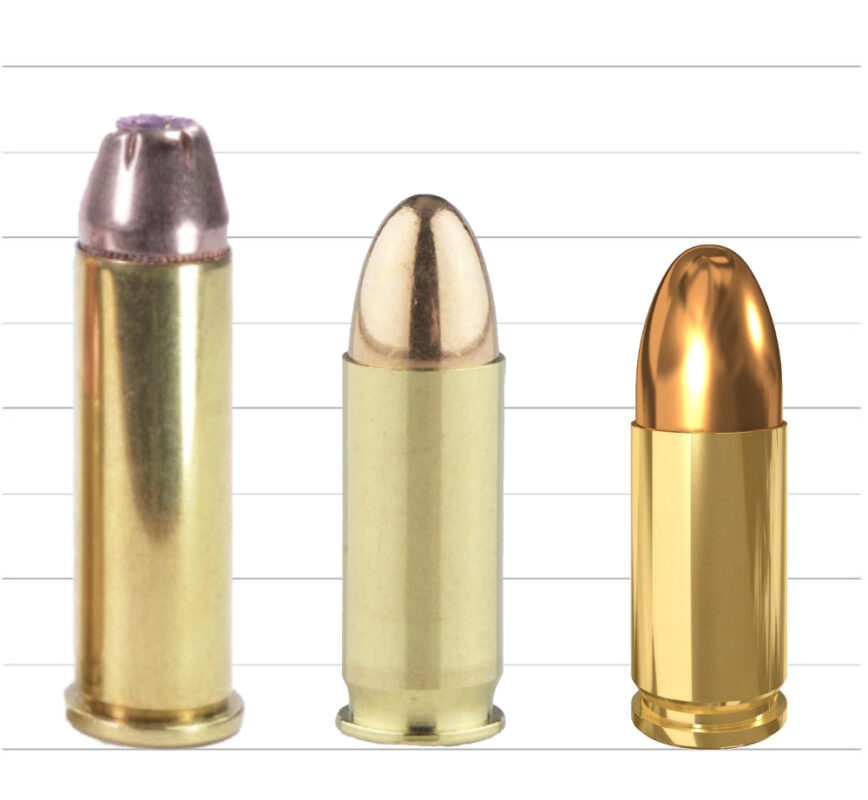HOP Blog
38 Super vs 38 Special: Understanding the Differences
The distinction between .38 Super and .38 Special is more profound than their names suggest.
Originating for different firearm types, the .38 Special was designed for revolvers, while the .38 Super was tailored for semi-automatic pistols.
This inherent difference underscores their non-interchangeability and unique ballistic profiles. Dating back to the 19th century, the .38 Special is known for its manageable recoil and suitability for target shooting and self-defense, despite its modest power.
Conversely, the .38 Super, a derivative of the .38 ACP, offers a compact yet more potent option, generating significantly higher chamber pressure and displaying superior ballistics ideal for competitive shooting.
.38 Special vs. .38 Super | What’s the Difference?
While the .38 Special and .38 Super both share a numerical designation and a storied history, different firearms use them for different purposes. This comparison will shed light on their unique characteristics, origins, ballistics, and applications of each to understand what sets them apart.

History of the .38 Special
The history of the .38 Special cartridge is rich and extends well beyond its initial military application at the turn of the 19th century. Designed by Smith & Wesson in 1898, the .38 Special was a response to the inadequacies of the .38 Long Colt cartridge, particularly highlighted during the Philippine–American War where it failed to stop charges of Filipino warriors effectively.
Initially loaded with black powder, the .38 Special’s introduction marked a significant advancement in ammunition technology, transitioning to smokeless powder within a year due to its popularity. This move not only enhanced the cartridge’s performance but also solidified its place in both military and law enforcement arsenals for decades. From the 1920s through the 1990s, the majority of U.S. police departments adopted it as their standard service cartridge, and U.S. military personnel widely used it in both World Wars, the Korean War, and the Vietnam War.

The .38 Special’s unique ability to be safely fired in revolvers chambered for the more powerful .357 Magnum, thanks to its nearly identical dimensions with the .38 Long Colt and .357 Magnum, highlight its versatility. This characteristic has made the .38 Special a preferred choice for a wide range of applications, from recreational target shooting and competition to personal defense and small-game hunting, more than a century after its introduction.
Its widespread use by U.S. aircrew during World War II and subsequent adoption of the Cartridge, Caliber 38, Ball, by the U.S. Air Force in 1956, highlight its military significance. The development of high-velocity PGU-12/B cartridges and the introduction of +P loadings reflect ongoing innovations aimed at maximizing the .38 Special’s performance for law enforcement and security roles.
History of the .38 Super
The .38 Super, officially introduced in the late 1920s, was developed as a higher-pressure version of the .38 ACP to enhance ballistic performance, particularly for the M1911 pistol. Designed to penetrate car bodies of its era, the .38 Super was initially favored for its power, which, for a time, surpassed the capabilities of available police revolvers. However, the introduction of the .357 Magnum in 1935 significantly altered the landscape, drawing law enforcement’s preference back to revolvers due to the Magnum’s superior power.
Despite this shift, the .38 Super maintained a presence in the shooting world, notably within competitive shooting. Its dimensions, identical to the .38 ACP, allowed it to be chambered in pistols designed for the .38 ACP, but with a significant increase in velocity and energy due to the higher pressure loadings. The .38 Super distinguished itself further by becoming a dominant caliber in IPSC competition, appreciated for its flat trajectory, good accuracy, and high muzzle energy which outpaced many .45 ACP loads.
A pivotal change in the .38 Super’s trajectory came with the re-design of the chamber by Irv Stone of Bar-Sto Barrels, allowing it to headspace on the case mouth rather than the semi-rim. This modification significantly improved the cartridge’s accuracy in modern firearms. Additionally, the industry’s move to add the +P headstamp in 1974 further distinguished the .38 Super from its lower-pressure ancestor, the .38 ACP.
In recent years, the .38 Super has seen innovation in cartridge case design with the advent of the .38 Super Comp, .38 Super Lapua, .38 Super RL (Armscor), and .38 TJ (.38 Todd Jarrett), aiming to address the feeding reliability issues associated with the semi-rimmed case in double-stack magazine pistols. These developments have transformed the .38 Super into an almost truly rimless cartridge, enhancing its reliability in semi-automatic pistols used in competitive shooting.
The .38 Super continues to prove itself in the competitive shooting world, particularly in IPSC and USPSA competitions where it exceeds the power factor threshold for a “major” charge, offering a blend of high power and manageable recoil. This resurgence highlights the enduring versatility and appeal of the .38 Super, from its early days as a powerful alternative for law enforcement to its current status as a preferred caliber for competitive shooters seeking precision and performance.

.38 Special vs .38 Super | Ballistics
The .38 Special and .38 Super, while similar in bullet diameter, differ significantly in their ballistic performance. The .38 Super, designed for semi-automatic pistols, generates nearly double the chamber pressure of the .38 Special, translating to higher muzzle velocity and energy. This results in superior ballistics, a flatter trajectory, and enhanced stopping power for the .38 Super compared to the revolver-oriented .38 Special.
HOP Munitions .38 Special Performance
HOP Munitions .38 Special +P 158gr JHP is an affordable yet reliable option for personal defense. Engineered for dependability across various conditions, it offers excellent penetration and consistent expansion.
This ammunition features 158-grain jacketed hollow point (JHP) bullets, clean-burning powders, and non-corrosive primers, all within reloadable brass casings.

Produced entirely in the USA, it combines performance with value, making it an ideal choice for those seeking effective self-defense rounds without overspending. With a velocity of 1,000 FPS and energy of 290 ft/lbs, it ensures a balance of power and precision.
HOP Munitions .38 Super Performance
HOP Munitions’ .38 Super +P JHP ammunition lineup is designed for superior self-defense performance, featuring three distinct bullet weights: 124gr, 147gr, and 90gr. Each variant offers maximum weight retention, exceptional penetration, and consistent expansion, ensuring unparalleled accuracy and lethal performance.
The 124gr option delivers a velocity of 1,300 FPS and energy of 465 ft/lbs, the 147gr option slows slightly to 1,200 FPS with 400 ft/lbs of energy, and the 90gr rounds stand out with a high velocity of 1,600 FPS and 512 ft/lbs of energy.

Loaded with high-quality components and housed in polished brass casings, these rounds provide reliable and seamless operation in any .38 Super chambered firearm, making them a cost-effective choice for home defense.
.38 Special Uses
The .38 Special cartridge has played a significant role in law enforcement, military, recreational shooting, and self-defense contexts since its inception in 1898. This versatility is attributed to its balanced performance, offering a reliable choice across various shooting disciplines. Beyond its primary uses for self-defense, home defense, and target shooting, the .38 Special has a rich history and is considered by some a jack of all trades round.
Law Enforcement and Military Use
For several decades, the .38 Special was the standard service cartridge for a majority of United States police departments, from the 1920s up to the 1990s. It was also extensively used by U.S. military personnel across significant conflicts including World War I, World War II, the Korean War, and the Vietnam War. The cartridge’s manageable recoil, combined with sufficient stopping power, made it a preferred choice for police officers and soldiers who required a reliable sidearm cartridge.
During World War II, .38 Special revolvers were issued to U.S. aircrew, indicating its trusted performance even in critical situations. The development of the .38 Special Military & Police (M&P) revolver in 1899 further emphasizes its early adoption and continued use in law enforcement and the military.
The introduction of .38 Special +P and +P+ loadings marked an evolution in the cartridge’s development, providing higher pressures for increased velocity and energy. These loadings have expanded the .38 Special’s use in law enforcement, offering enhanced performance for stopping power in self-defense situations. The development of specialized ammunition, such as the “FBI Load,” further underscores its adaptability and continued relevance in modern-day law enforcement applications.

Recreational Shooting and Competition
The .38 Special has been a staple in recreational target shooting and formal target competition due to its accuracy and manageable recoil. Its popularity among recreational shooters is undiminished, with many appreciating the cartridge for both its historical significance and its shooting characteristics. The .38 Special’s performance in competitions, particularly in revolver categories, showcases its precision and reliability.
Handloading
Another aspect that highlights the .38 Special’s versatility is its popularity among handloaders. The cartridge’s straight walls and rimmed case make it an ideal candidate for reloading, allowing shooters to tailor the performance to their specific needs, whether for light target loads or more potent self-defense rounds. This flexibility has kept the .38 Special relevant in the shooting community, offering a personalized shooting experience.
.38 Super Uses
The .38 Super cartridge has a place in competitive shooting and self-defense, thanks to its high-velocity performance and accuracy. This cartridge, introduced as a high-pressure loading of the .38 ACP in the late 1920s, was designed for use in the M1911 pistol, showcasing its ability to penetrate car bodies of that era—a significant advantage over its competitors until the arrival of the .357 Magnum.
Competitive Shooting
The .38 Super has earned its reputation as a preferred caliber among top practical shooting competitors, maintaining dominance in IPSC competition. Its performance is characterized by higher bullet velocity potentials than the 9×19mm Parabellum, especially when handloaded, and in some factory-loaded defense rounds. This has made the .38 Super particularly appealing in shooting sports where its flat trajectory, good accuracy, and relatively high muzzle energy give competitors an edge. The caliber’s comeback in the competitive shooting scene, notably IPSC and USPSA, is attributed to its ability to meet the power factor threshold for a “major” charge while offering manageable recoil, a critical factor in competitive shooting sports.
Self-Defense
Beyond competitive shooting, the .38 Super also excels as a self-defense round. Its superior stopping power and flatter trajectory compared to the .38 Special make it a compelling choice for personal protection.
Modern ammunition advancements have seen the .38 Super +P cartridges achieving velocities exceeding 1,400 ft/s, comparable to the .357 SIG, and are manufactured with modern hollow-point style bullets that offer excellent ballistic performance for personal defense.
International Popularity
The cartridge’s popularity extends beyond the United States, with a growing following in Latin America. This is partly due to local restrictions on civilian ownership of firearms chambered for military cartridges like the 9mm Parabellum and .45 ACP, making the .38 Super +P a popular alternative.

Its usage is also recognized in Australia, especially in competition shooting, due to firearms laws that prohibit calibers over .38 for use in IPSC, highlighting the .38 Super’s global appeal and versatility.
Final Thoughts
Choosing between the .38 Special and .38 Super depends largely on the intended use and preference for firearms. The .38 Special’s historical significance and utility in revolvers make it a classic choice for personal defense and target practice. Conversely, the .38 Super’s modern ballistics and suitability for competitive shooting and self-defense in semi-auto handguns present a compelling option for shooters seeking performance and precision.
For enthusiasts of either caliber, ensuring a steady supply of quality ammunition is paramount. To that end, HOP Munitions offers an Ammunition Subscription service, designed to keep you well-stocked without the hassle of remembering to reorder.

